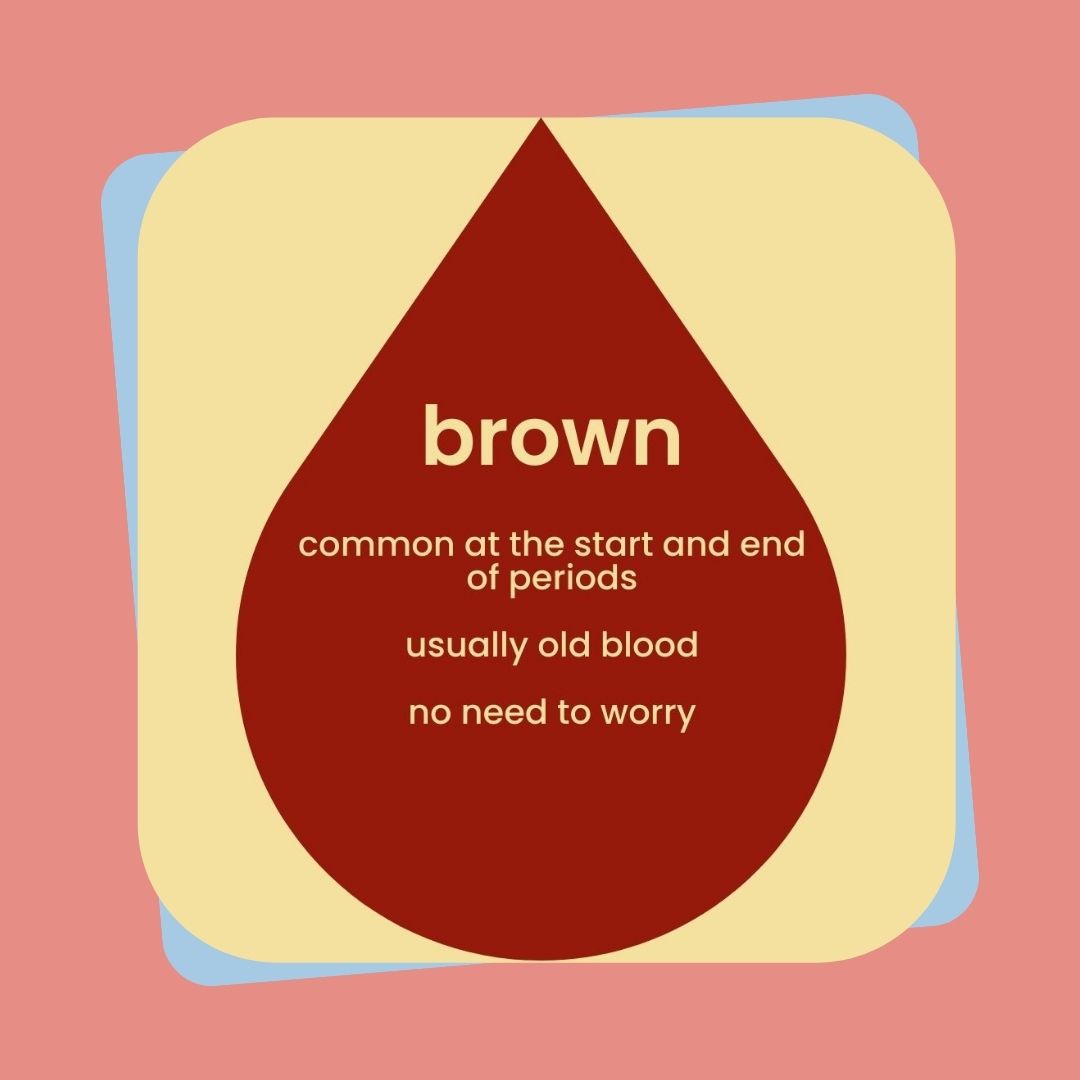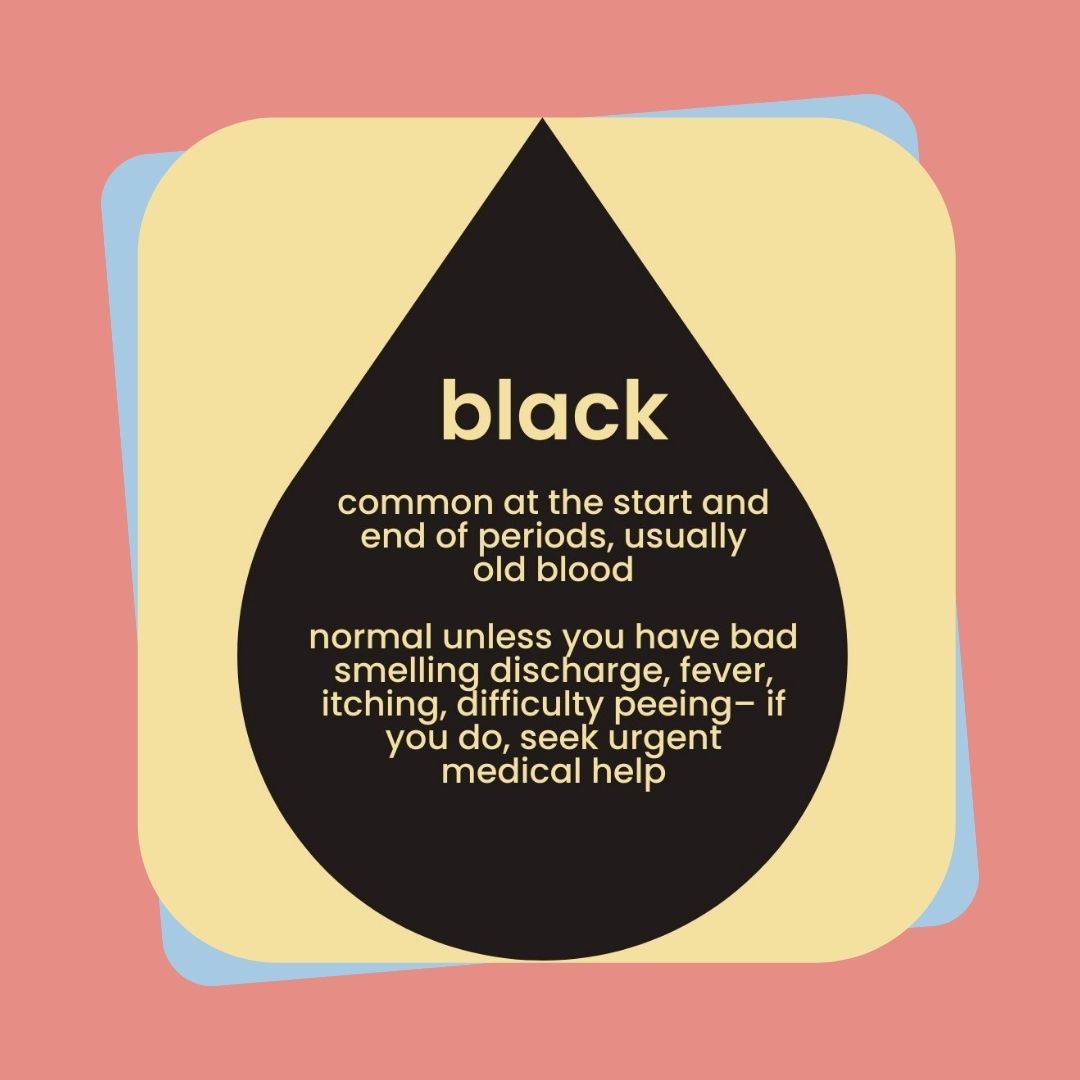
What your period blood colour means
Brown, pink, orange + more 🌈

Quick summary 📝
👉 Period blood changes colour for lots of natural reasons, e.g. during a period, brown blood is very common
👉 Most changes are normal, but some colours may signal an issue – especially if they come with unusual symptoms
👉 For any unusual symptoms like itching, a very bad smell, or unusual discomfort it’s best to check in with a doctor 🚑

Ever looked down at your pad and wondered why your period is brown? Or spotted another colour that made you worry?
It might seem a bit strange, but paying attention to the colour of your period blood can help you understand your health ☝️🤓
So luna's here to break down the different colours your period blood might be, and what each one means 🫶
Bright red blood ❤️
👉 Usually appears mid-period (day 2-3) when your flow is heavier
👉 A sign of fresh blood and a steady flow
👉 If you're feeling as you normally do, this is completely normal and nothing to worry about

Brown or dark red blood 🤎
👉 Seen at the start or end of a period when the flow is slower
👉 May be old blood that's stayed in body longer and oxidised (reacted with oxygen)
👉 Very common and usually nothing to worry about
If it comes with new symptoms like itching, a strong smell, or unusual discomfort it’s best to check in with a doctor 🚑

Black blood 🖤
👉 Seen at the start or end of a period when the flow is slower
👉 May be old blood that has stayed in body longer and oxidised (reacted with oxygen)
👉 If you feel fine otherwise, this is completely normal and nothing to worry about
👉 Can can sometimes be a sign of vaginal blockage, like a forgotten tampon
Signs of vaginal blockage include:
👉 Bad-smelling discharge
👉 Fever
👉 Difficulty peeing
👉 Itching in or around the vagina
If you have black blood AND any of these symptoms, feel unwell, or think something is stuck inside you, seek urgent medical advice 🚨

Pink blood 🩷
👉 Can happen when period blood mixes with discharge, making it look lighter
👉 May be linked to low oestrogen (a hormone), often due to medication or hormonal changes
👉 Can also be a sign of anaemia, significant weight loss, or a diet low in iron and nutrients
If pink blood is unusual for you, lasts a long time, or comes with other symptoms like dizziness or extreme fatigue, check in with your doctor 🩺

Orange blood 🧡
👉 Can happen when period blood mixes with discharge, making it look lighter
👉 May be a sign of an infection, like bacterial vaginosis (BV) or trichomoniasis, especially alongside unusual discharge.
Other symptoms of infection to look out for:
👉 Fishy or unusual smell
👉 Pain or burning in the vagina
👉 Pain when peeing
👉 Redness or irritation down there
If you have orange blood along with these symptoms, speak to a doctor to get treatment 🩺

Grey blood 🤍
👉 Can be a sign of bacterial vaginosis (BV), which happens when the acidity levels in the vagina change, leading to a bacterial imbalance
👉 The grey colour comes from a mix of bacteria, white blood cells, and discharge mixing with period blood
Other symptoms of BV to look out for:
👉 Fishy or unusual smell
👉 Pain or burning in the vagina
👉 Pain when peeing
If you notice grey blood with these symptoms, speak to a doctor for treatment 🩺

Your period blood can tell you a lot 🌷
As you've hopefully learnt, most colour changes are completely normal if you otherwise feel fine.
But some colours may be a sign to check in with a doctor – especially if you notice unusual symptoms.
Tracking your cycle and any changes using luna's Tracker can help you feel more in control 💛
How we created this article:
luna's team of experts comprises GPs, Dermatologists, Safeguarding Leads and Junior Doctors as well as Medical Students with specialised interests in paediatric care, mental health and gynaecology. All articles are created by experts, and reviewed by a member of luna's senior review team.
Sources:
Creekside "Different period blood colours" | Accessed 18.03.25
https://creeksideobgyn.com/colors-period-blood-means/NHS “Periods” | Accessed 18.03.25
https://www.nhs.uk/conditions/periods/NHS "Bacterial vaginosis" | Accessed 18.03.25
https://www.nhs.uk/conditions/bacterial-vaginosis/NHS "Iron deficiency anaemia" | Accessed 18.03.25
https://www.nhs.uk/conditions/iron-deficiency-anaemia/NHS "Trichomoniasis" | Accessed 18.03.25
https://www.nhs.uk/conditions/trichomoniasis/